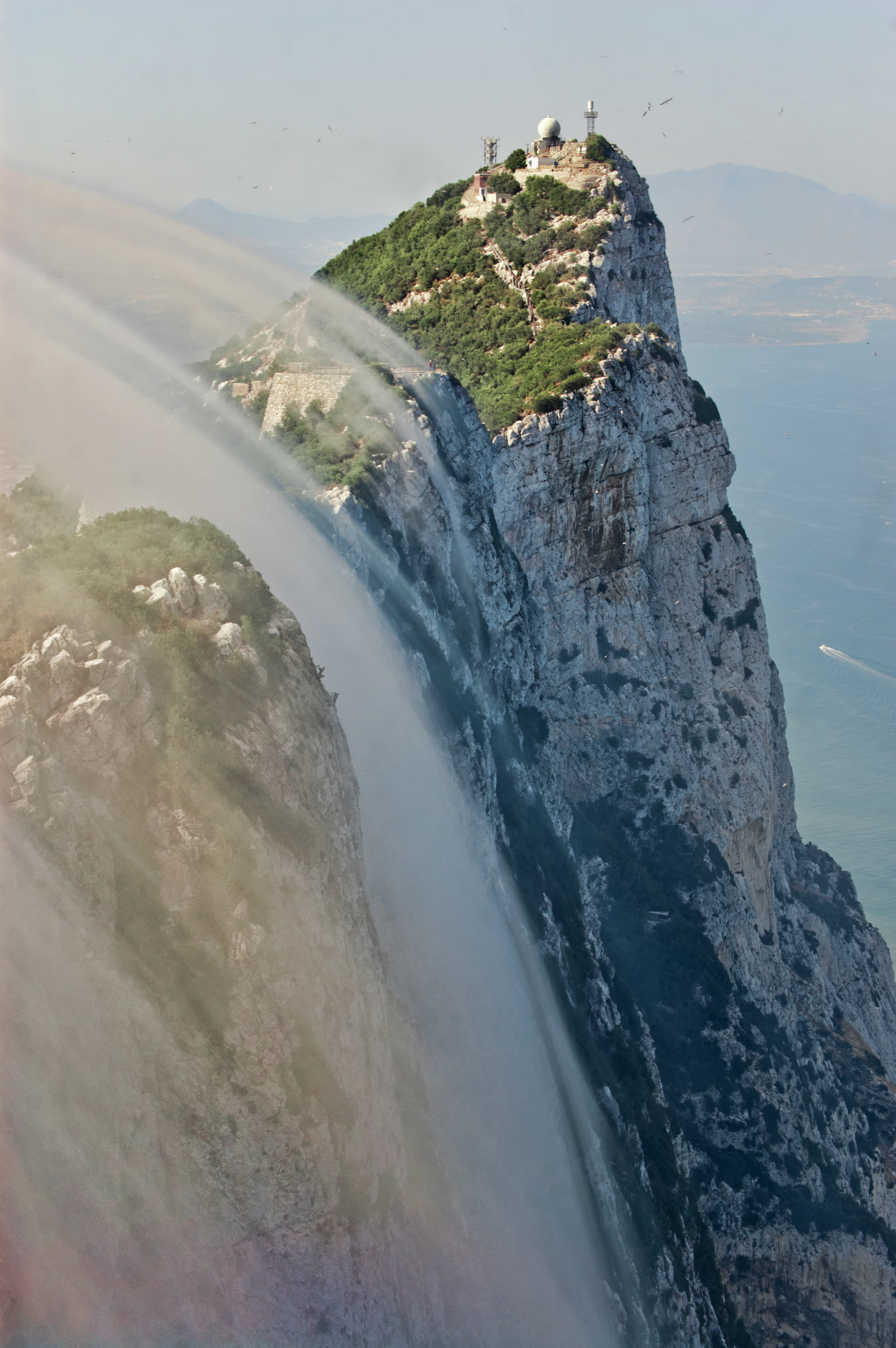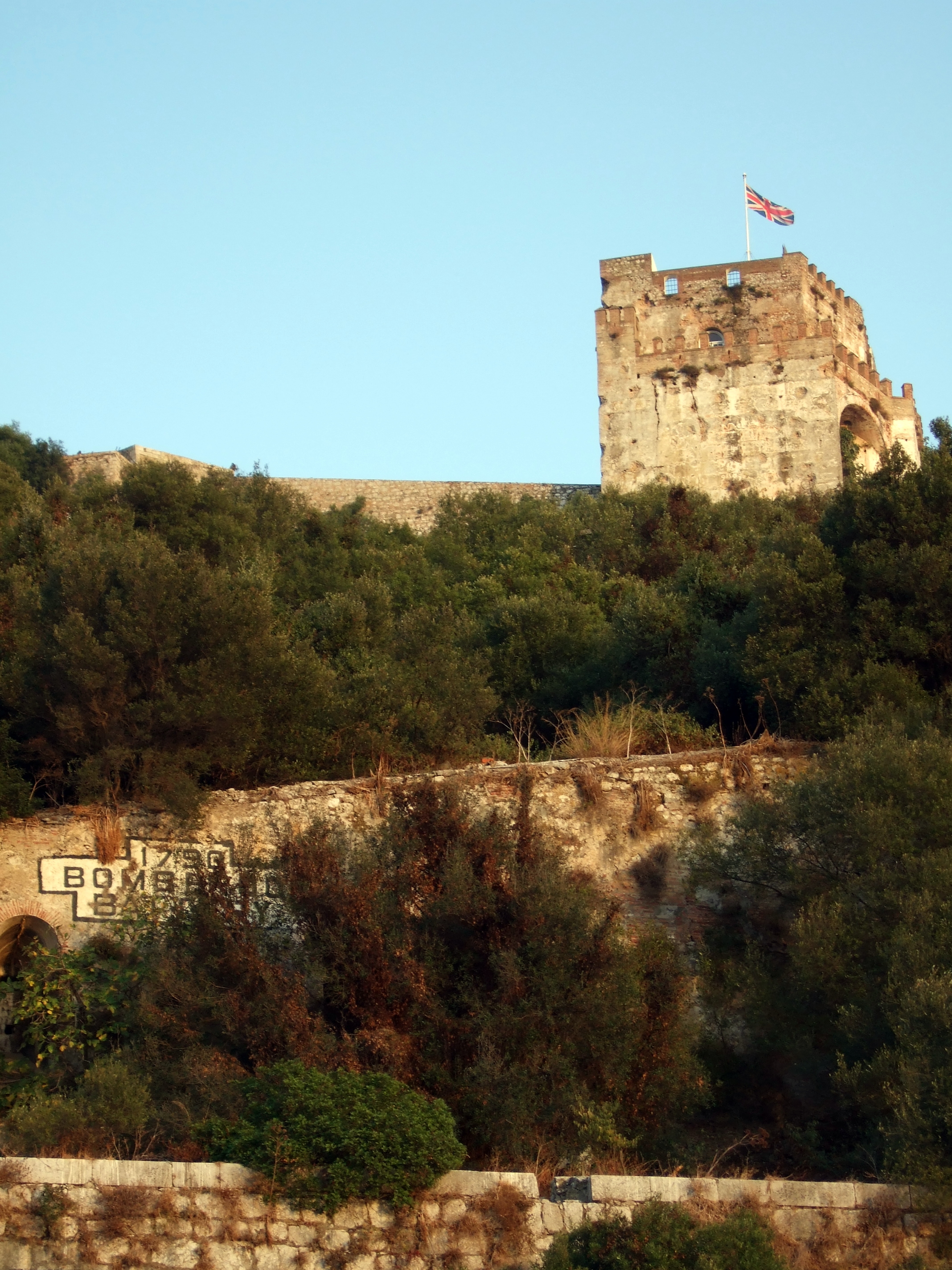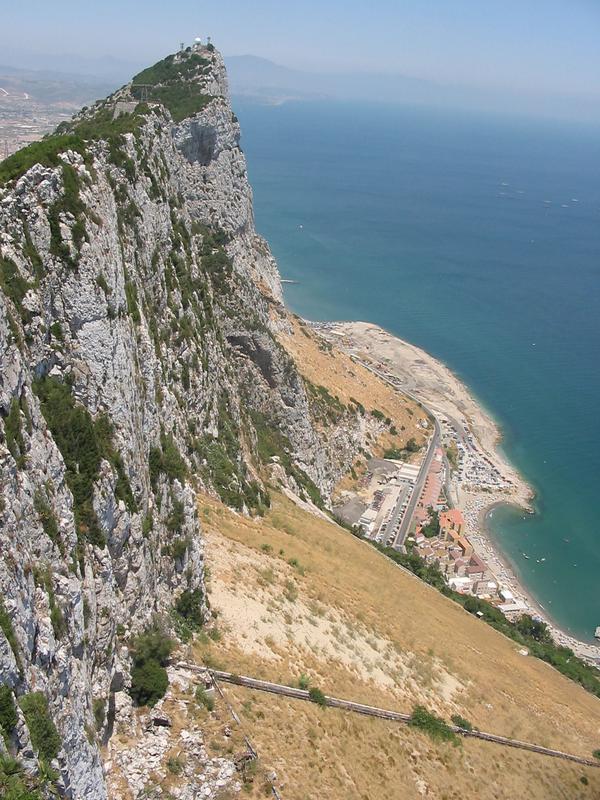|
Fourth Siege Of Gibraltar
The fourth siege of Gibraltar, fought from June until August 1333, pitted a Christian army under King Alfonso XI of Castile against a large Moorish army led by Muhammed IV of Granada and Abd al-Malik Abd al-Wahid of Fes. It followed on immediately from the third siege of Gibraltar, fought earlier in 1333. The siege began inauspiciously with a disastrous landing by Castilian forces on the west side of Gibraltar, before developing into a stalemate in which neither side had the strength to capture Gibraltar, nor to break out or lift the siege. Both sides faced acute shortages of food – the Gibraltar garrison was cut off from resupply, while the Castilians, deep within enemy territory, could only be resupplied via an unreliable sea route. After two months of inconclusive siege warfare, the Castilians and Moors reached a truce agreement that allowed both sides to make an honourable exit from the siege. Although the Moors managed to keep Gibraltar, the truce cost Muhammed IV his l ... [...More Info...] [...Related Items...] OR: [Wikipedia] [Google] [Baidu] |
Battle Of The Strait
The Battle of the Strait ( es, Batalla del Estrecho) was a military conflict contesting the ports in the Straits of Gibraltar taking place in the late thirteenth century and the first half of the fourteenth. The conflict involves principally the Spanish Muslim Emirate of Granada, the Spanish Christian Crown of Castile and the North African Muslim Marinid state. The ports' strategic value came from their position linking Spain and North Africa, thus connecting Muslims in Spain with the rest of the Islamic world. The campaign had mixed results. Castile gained Tarifa permanently, and managed to take Gibraltar and Algeciras but both would revert to Muslim rule. Castile also failed to gain any port in the African side of the strait. The Battle for the Strait In the late thirteen and early fourteenth centuries, Castile, the Marinids of Morocco and the Nasrids of Granada fought for the control of the Strait of Gibraltar. This "battle" ( es, la Cuestión del Estrecho) is a major cha ... [...More Info...] [...Related Items...] OR: [Wikipedia] [Google] [Baidu] |
Castellar De La Frontera
Castellar de la Frontera is a town and municipality located in the province of Cádiz, in Andalusia, Spain. It is a medieval town within a castle. Description Castellar de la Frontera is a village within a castle surrounded by the walls of a well preserved Moorish- Christian fortress. It is located within the Parque Natural de Los Alcornocales next to a reservoir formed by the Guadarranque River. The village was abandoned in the 1970s and its inhabitants moved to the aptly named Nuevo Castellar ( es, New Castellar). The derelict state of the village attracted a number of Germans who took over the empty houses and built temporary dwellings outside the walls. The village was later repopulated reporting a population in 2012 of 3,202. - Sistema de Información Multiterritorial de Andalucía, acc ... [...More Info...] [...Related Items...] OR: [Wikipedia] [Google] [Baidu] |
Juan Alfonso De Haro
''Juan'' is a given name, the Spanish and Manx versions of ''John''. It is very common in Spain and in other Spanish-speaking communities around the world and in the Philippines, and also (pronounced differently) in the Isle of Man. In Spanish, the diminutive form (equivalent to ''Johnny'') is , with feminine form (comparable to ''Jane'', ''Joan'', or ''Joanna'') , and feminine diminutive (equivalent to ''Janet'', ''Janey'', ''Joanie'', etc.). Chinese terms * ( or 娟, 隽) 'beautiful, graceful' is a common given name for Chinese women. * () The Chinese character 卷, which in Mandarin is almost homophonic with the characters for the female name, is a division of a traditional Chinese manuscript or book and can be translated as 'fascicle', 'scroll', 'chapter', or 'volume'. Notable people * Juan (footballer, born 1979), Brazilian footballer * Juan (footballer, born 1982), Brazilian footballer * Juan (footballer, born March 2002), Brazilian footballer * Juan (footballer, b ... [...More Info...] [...Related Items...] OR: [Wikipedia] [Google] [Baidu] |
Juan Núñez III De Lara
Juan III Núñez de Lara y de la Cerda (born Juan Fdez. de la Cerda y Núñez de Lara: 1313 - Burgos, 28 November 1350), Lord of Lara and Vizcaya, son of Ferdinand de la Cerda (1275–1322) and Juana Núñez de Lara ''the Little Dove''. Despite belonging to the House de la Cerda and aspiring to the Castilian-Leonese throne during the reigns of Sancho IV of Castile, Ferdinand IV of Castile and Alfonso XI of Castile, he carried the family name of his mother which corresponded to the name of his lordship. He was Lord of Biscay by his marriage to Maria Diaz de Haro II, daughter of Don Juan de Haro ''the Eye''. He was also Lord of Villafranca, Oropesa, Torrelobatón, Lerma, Paredes de Nava, Castroverde and Aguilar. Ensign of the King and Lord Steward of Alfonso XI of Castile. He was a great-grandson of Alfonso X the Wise, King of Castile and León, and Louis IX, King of France. Family Origins Son of Ferdinand de la Cerda (1275–1322) and Juana Núñez de Lara ''the Little Dove ... [...More Info...] [...Related Items...] OR: [Wikipedia] [Google] [Baidu] |
Almogavars
Almogavars ( es, almogávares, an, almugávares, ca, almogàvers and pt, almogávares ar, Al-Mugavari) is the name of a class of light infantry soldier originated in the Crown of Aragon used in the later phases of the Reconquista, during the 13th and 14th centuries. Almogavars were lightly clad, quick-moving frontiersmen and foot-soldiers. They hailed from the Kingdom of Aragon, the Principality of Catalonia, the Kingdom of Valencia, the Crown of Castile and the Kingdom of Portugal. In the Crown of Castile, the inner organization was managed by King Alfonso X of Castile in the Siete Partidas. At first these troops were formed by farmers and shepherds originating from the countryside, woods and frontier mountain areas. Later, they were employed as mercenary, mercenaries in Italy, Latin Greece and the Levant. Etymology There are several theories as to where this name comes from ar, المغوار; pl. ar, المغاوير, ''al-mughāwir'', lit=Raiders, or ''al-mukhābir'' ... [...More Info...] [...Related Items...] OR: [Wikipedia] [Google] [Baidu] |
Seville
Seville (; es, Sevilla, ) is the capital and largest city of the Spanish autonomous community of Andalusia and the province of Seville. It is situated on the lower reaches of the River Guadalquivir, in the southwest of the Iberian Peninsula. Seville has a municipal population of about 685,000 , and a metropolitan population of about 1.5 million, making it the largest city in Andalusia, the fourth-largest city in Spain and the 26th most populous municipality in the European Union. Its old town, with an area of , contains three UNESCO World Heritage Sites: the Alcázar palace complex, the Cathedral and the General Archive of the Indies. The Seville harbour, located about from the Atlantic Ocean, is the only river port in Spain. The capital of Andalusia features hot temperatures in the summer, with daily maximums routinely above in July and August. Seville was founded as the Roman city of . Known as ''Ishbiliyah'' after the Islamic conquest in 711, Seville became ... [...More Info...] [...Related Items...] OR: [Wikipedia] [Google] [Baidu] |
Levant (wind)
The levant ( ca, Llevant, it, Levante, mt, Lvant, el, Λεβάντες, es, Levante) is an easterly wind that blows in the western Mediterranean Sea and southern France, an example of mountain-gap wind. In Roussillon it is called "llevant" and in Corsica "levante". In the western Mediterranean, particularly when the wind blows through the Strait of Gibraltar, it is called the Viento de Levante or the Levanter. It is also known as the Solano. When blowing moderately or strongly, the levant causes heavy swells on the Mediterranean. Usually gentle and damp, the levant frequently brings clouds and rain. When it brings good weather, it is known as the "''levant blanc''",Meteo-France website (in French) on "Vents regionaux and vents locaux" or "''levante calma''" in Gibraltar. The origin of the name is the same as the origin of the Levant, the region of the eastern Mediterranean: it is the Latin word "levante", the participle of levare "to raise" – as in sol levante "risi ... [...More Info...] [...Related Items...] OR: [Wikipedia] [Google] [Baidu] |
Sally (military)
A sortie (from the French word meaning ''exit'' or from Latin root ''surgere'' meaning to "rise up") is a deployment or dispatch of one military unit, be it an aircraft, ship, or troops, from a strongpoint. The term originated in siege warfare. In aviation In military aviation, a sortie is a combat mission of an individual aircraft, starting when the aircraft takes off. For example, one mission involving six aircraft would tally six sorties. The sortie rate is the number of sorties that a given unit can support in a given time. In siege warfare In siege warfare, the word ''sortie'' refers specifically to a sudden issuing of troops against the enemy from a defensive position—that is, an attack launched against the besiegers by the defenders. If the sortie is through a sally port, the verb ''to sally'' may be used interchangeably with ''to sortie''. Purposes of sorties include harassment of enemy troops, destruction of siege weaponry and engineering works, joining the relief f ... [...More Info...] [...Related Items...] OR: [Wikipedia] [Google] [Baidu] |
Moorish Castle
The Moorish Castle is the name given to a medieval fortification in Gibraltar comprising various buildings, gates, and fortified walls, with the dominant features being the Tower of Homage and the Gate House. Part of the castle itself also housed the prison of Gibraltar until it was relocated in 2010. The Tower of Homage is clearly visible to all visitors to Gibraltar; not only because of its striking construction, but also because of its dominant and strategic position. Although sometimes compared to the nearby '' alcazars'' in Spain, the Moorish Castle in Gibraltar was constructed by the Marinid dynasty, making it unique in the Iberian Peninsula. History Gibraltar has always been of special significance to the numerous peoples and civilizations that have visited or occupied it over the ages, from the Neanderthal period, through the Classical and on to Moorish, Spanish, and the current British rule. The Moorish occupation is by far the longest in Gibraltar's recorded history ... [...More Info...] [...Related Items...] OR: [Wikipedia] [Google] [Baidu] |
Rock Of Gibraltar
The Rock of Gibraltar (from the Arabic name Jabel-al-Tariq) is a monolithic limestone promontory located in the British territory of Gibraltar, near the southwestern tip of Europe on the Iberian Peninsula, and near the entrance to the Mediterranean. It is high. Most of the Rock's upper area is covered by a nature reserve, which is home to around 300 Barbary macaques. These macaques, as well as a labyrinthine network of tunnels, attract many tourists each year. The Rock of Gibraltar, one of the two traditional Pillars of Hercules, was known to the Romans as ''Mons Calpe'', the other pillar being ''Mons Abila'', either Monte Hacho or Jebel Musa on the African side of the Strait. According to ancient myths fostered by the Greeks and the Phoenicians, and later perpetuated by the Romans, the two points marked the limit to the known world, although the Phoenicians had actually sailed beyond this point into the Atlantic, both northward and southward. The Mediterranean Sea surroun ... [...More Info...] [...Related Items...] OR: [Wikipedia] [Google] [Baidu] |
Palmones
Palmones is a village on the Bay of Gibraltar between Algeciras and La Linea de la Concepcion in the Province of Cádiz in Spain. The San Roque Refinery and Los Barrios commercial centre lie on either side of the town. The village has a sea promenade and beach. The harbor is prone to oil spillage and is a catchment area for waste and garbage of yachts and other boats moored at Algeciras or Gibraltar. The beach is busy in summer and there is a beach bar that serves tapas A tapa () is an appetizer or snack in Spanish cuisine. Tapas can be combined to make a full meal, and can be cold (such as mixed olives and cheese) or hot (such as ''chopitos'', which are battered, fried baby squid, or patatas bravas). In some ... and drinks. There is a picturesque island in the river mouth, and many tourists wish to swim there. The current is strong and can only be mastered by strong swimmers in low tide conditions. Any tourist who attempts to swim over should seek advice from locals. Palom ... [...More Info...] [...Related Items...] OR: [Wikipedia] [Google] [Baidu] |
Sierra Carbonera
The Sierra Carbonera is a small range of mountains located in the Province of Cádiz in Spain, at the boundary between the municipalities of San Roque and La Línea de la Concepción, north of the Rock of Gibraltar. It rises to a maximum altitude of at the summit of Carboneras, which is occupied by a radio communications installation. Description The Sierra Carbonera is noted for its fine views over the region, stretching on a clear day as far as Ceuta and Tetouan in Morocco on the far side of the Strait of Gibraltar. A 16th century watchtower stood on its highest summit until 1967, when it was demolished. The watchtower was known locally as ''Sillón de la Reina'' (Queen's Chair), reflecting a legend that it was used by Eleanor of Guzman Eleanor () is a feminine given name, originally from an Old French adaptation of the Old Provençal name ''Aliénor''. It is the name of a number of women of royalty and nobility in western Europe during the High Middle Ages. The name ... [...More Info...] [...Related Items...] OR: [Wikipedia] [Google] [Baidu] |




